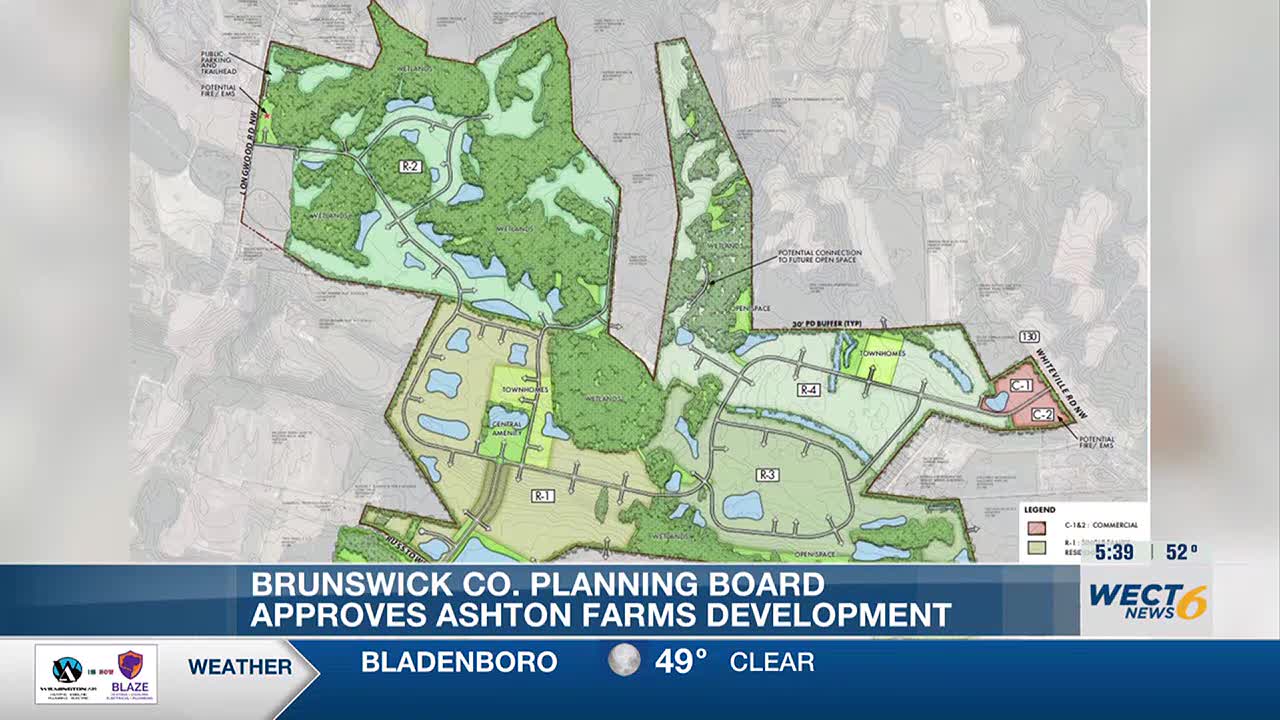Report on California’s Cap-and-Trade Program and its Alignment with Sustainable Development Goals
Introduction and Context
Climate change presents an immediate and tangible threat to California, directly impacting public health, food security, and economic stability. These impacts challenge the state’s progress toward achieving the Sustainable Development Goals (SDGs). California’s Cap-and-Trade program, a primary policy instrument for SDG 13 (Climate Action), is currently undergoing legislative review for its extension. This report analyzes the program’s performance and proposed revisions through the framework of the SDGs, focusing on its implications for agriculture, public health, and economic equity.
Climate Change Impacts on Key Sustainable Development Goals
The worsening effects of climate change are undermining several core SDGs within California.
- SDG 2 (Zero Hunger): The agricultural sector, crucial for food security and sustainable agriculture, is facing acute threats. Climate-related events such as floods, extreme heatwaves, and wildfires have decimated harvests and destroyed farms. This instability drives up food costs and contributes to the annual loss of nearly 1,500 farms, jeopardizing the state’s food supply and progress on this goal.
- SDG 3 (Good Health and Well-being): Pollution from major industries, particularly the oil and gas sector, has severe public health consequences. Communities, especially in agricultural regions like the San Joaquin Valley, experience higher rates of asthma, heart disease, and cancer. The associated medical costs, estimated at $700 million annually in that region from emergency room visits and hospitalizations, represent a significant barrier to achieving good health for all.
- SDG 8 (Decent Work and Economic Growth): The livelihoods of farmers, ranchers, and farmworkers are increasingly vulnerable. The viability of California’s agricultural economy is at risk, threatening the economic foundation of rural communities and the principle of decent work for all.
- SDG 15 (Life on Land): Investment in sustainable agricultural practices is vital for protecting California’s natural resources. Supporting farmers helps restore soil health and biodiversity, which are essential components of protecting terrestrial ecosystems.
Analysis of the Cap-and-Trade Program’s Efficacy
Since its operation began in 2012, the Cap-and-Trade program has aimed to align economic activity with SDG 12 (Responsible Consumption and Production) by pricing carbon emissions. However, its implementation has yielded mixed results in advancing the broader SDG agenda.
Program Achievements
The program has successfully generated $12.8 billion in funds that have been invested in projects supporting various SDGs, including:
- Safe and affordable drinking water access (SDG 6).
- Home energy efficiency upgrades and utility bill credits (SDG 7 & SDG 11).
- Adoption of climate-resilient practices by farmers and ranchers (SDG 2 & SDG 13).
Program Shortcomings
Despite its successes, the program’s effectiveness has been compromised by provisions that are misaligned with sustainable development principles. History shows that legislative extensions have prioritized industry interests, providing “pollution freebies” to oil and gas giants worth nearly $890 million last year alone. These subsidies undermine the program’s ability to reduce pollution and fund community-focused climate solutions. Furthermore, the program allows polluters to use out-of-state carbon offsets, sending an estimated $140 million out of California annually for projects with questionable climate benefits.
Recommendations for Reforming Cap-and-Trade to Advance the SDGs
To ensure California’s climate policy effectively supports an equitable and sustainable future, the reauthorization of the Cap-and-Trade program must incorporate the following reforms:
- Eliminate Pollution Giveaways: To fully align with SDG 13 (Climate Action) and SDG 3 (Good Health and Well-being), all subsidies and free pollution allowances for the oil and gas industry must be eliminated. This will enforce the “polluter pays” principle and accelerate emissions reductions.
- Reform Pollution Offset Mechanisms: The program must fix rules for pollution offsets to ensure they provide verifiable, local climate benefits and do not allow industries to evade their responsibility to reduce direct emissions.
- Prioritize Community and Agricultural Investments: A new commitment should direct a significant portion of funds (e.g., 15%) to scale up agricultural climate solutions. This investment would directly support SDG 2 (Zero Hunger) by ensuring food affordability and the long-term viability of California’s farms.
Without these reforms, the program risks prioritizing affordability for the industry responsible for the climate crisis over the hardworking families and vulnerable communities it is meant to protect. Compromising the state’s largest source of climate funding with handouts to polluters is untenable when the achievement of multiple Sustainable Development Goals is at stake.
Analysis of Sustainable Development Goals in the Article
-
Which SDGs are addressed or connected to the issues highlighted in the article?
The article addresses several Sustainable Development Goals (SDGs) by discussing the interconnected challenges of climate change, agriculture, public health, and economic policy in California. The primary SDGs identified are:
- SDG 2: Zero Hunger: The article focuses heavily on the impact of climate change on agriculture, including decimated harvests, damaged crops, rising food costs, and the loss of farms, all of which threaten food security and sustainable agriculture.
- SDG 3: Good Health and Well-being: It directly links pollution from the oil and gas industry to negative health outcomes, mentioning “higher rates of asthma, heart disease, and cancer” and the significant medical costs associated with air pollution.
- SDG 6: Clean Water and Sanitation: The text notes that funds from the Cap-and-Trade program have been used to support “safe and affordable drinking water access.”
- SDG 8: Decent Work and Economic Growth: The article discusses the livelihoods of farmers, ranchers, and farmworkers, which are threatened by climate change and policy decisions. It also touches on the economic costs of pollution and the loss of farms.
- SDG 10: Reduced Inequalities: The article highlights a potential inequality in policy-making, questioning why leaders might prioritize “affordability for the industry that caused the climate crisis over vulnerable communities and hardworking families.”
- SDG 13: Climate Action: This is the central theme of the article. It discusses the direct impacts of climate change (floods, heat waves, wildfires), policy responses like the Cap-and-Trade program, and the need to reduce emissions from the state’s largest polluters.
- SDG 15: Life on Land: The article mentions the importance of investing in agriculture to “restore our soils and biodiversity,” linking sustainable farming practices to the health of terrestrial ecosystems.
-
What specific targets under those SDGs can be identified based on the article’s content?
Based on the article’s discussion, the following specific SDG targets can be identified:
- Target 2.4: By 2030, ensure sustainable food production systems and implement resilient agricultural practices that increase productivity and production, that help maintain ecosystems, that strengthen capacity for adaptation to climate change, extreme weather, drought, flooding and other disasters and that progressively improve land and soil quality. The article’s call to “invest in programs that benefit… farmers” and “scale up agricultural climate solutions” directly aligns with this target.
- Target 3.9: By 2030, substantially reduce the number of deaths and illnesses from hazardous chemicals and air, water and soil pollution and contamination. The article’s concern about pollution leading to “higher rates of asthma, heart disease, and cancer” and costing millions in medical bills is a direct reference to this target.
- Target 6.1: By 2030, achieve universal and equitable access to safe and affordable drinking water for all. The mention of program funds supporting “safe and affordable drinking water access” connects to this target.
- Target 8.4: Improve progressively, through 2030, global resource efficiency in consumption and production and endeavour to decouple economic growth from environmental degradation. The Cap-and-Trade program, which aims to reduce pollution while funding community projects, is an instrument for achieving this decoupling.
- Target 10.2: By 2030, empower and promote the social, economic and political inclusion of all, irrespective of age, sex, disability, race, ethnicity, origin, religion or economic or other status. The critique of prioritizing industry over “vulnerable communities and hardworking families” speaks to the need for more inclusive and equitable policy.
- Target 13.1: Strengthen resilience and adaptive capacity to climate-related hazards and natural disasters in all countries. The article describes how farmers are facing “floods,” “extreme heat waves,” and “wildfires,” and how program funds help them “decrease their vulnerability to future disasters.”
- Target 13.2: Integrate climate change measures into national policies, strategies and planning. The entire discussion revolves around California’s Cap-and-Trade program, a key state-level policy for climate action.
- Target 15.3: By 2030, combat desertification, restore degraded land and soil, including land affected by desertification, drought and floods, and strive to achieve a land degradation-neutral world. The call to invest in agriculture to “restore our soils” directly supports this target.
-
Are there any indicators mentioned or implied in the article that can be used to measure progress towards the identified targets?
Yes, the article mentions several quantitative and qualitative indicators that can be used to measure progress:
- Indicator for SDG 2 (Target 2.4): The rate of farm loss. The article states, “Each year, nearly 1,500 farms are lost.” A reduction in this number would indicate progress in making agriculture more resilient and viable.
- Indicator for SDG 3 (Target 3.9): The economic cost of health impacts from pollution. The article provides a specific metric: “polluted air in California’s farmbelt in the San Joaquin Valley costs $700 million in emergency room visits and hospitalizations.” Tracking this cost over time would measure progress in reducing health burdens from pollution.
- Indicator for SDG 13 (Target 13.2 & 13.a): The amount of funding generated and allocated for climate action. The article mentions “$12.8 billion in projects” financed by the program. A proposed indicator is the “commitment to direct 15 percent of funds to scale up agricultural climate solutions.”
- Indicator for SDG 13 (Target 13.2): The value of subsidies or “giveaways” to polluting industries. The article quantifies these as “nearly $890 million last year alone.” Eliminating or reducing this amount would be a key indicator of policy reform.
- Indicator for SDG 13 (Target 13.2): The value of pollution offsets. The article mentions that polluters are “sending $140 million out of state” for offsets, implying that tracking this figure is important for assessing the program’s effectiveness.
SDGs, Targets, and Indicators Table
| SDGs | Targets | Indicators |
|---|---|---|
| SDG 2: Zero Hunger | 2.4: Ensure sustainable food production systems and implement resilient agricultural practices. | The number of farms lost annually (currently “nearly 1,500”). |
| SDG 3: Good Health and Well-being | 3.9: Substantially reduce the number of deaths and illnesses from air, water and soil pollution. | Annual cost of emergency room visits and hospitalizations due to polluted air (currently “$700 million” in the San Joaquin Valley). |
| SDG 6: Clean Water and Sanitation | 6.1: Achieve universal and equitable access to safe and affordable drinking water for all. | Amount of funding allocated to projects supporting “safe and affordable drinking water access.” |
| SDG 8: Decent Work and Economic Growth | 8.4: Decouple economic growth from environmental degradation. | The existence and reform of policies like Cap-and-Trade that put a price on pollution. |
| SDG 10: Reduced Inequalities | 10.2: Empower and promote the social, economic and political inclusion of all. | The balance of policy benefits between polluting industries and “vulnerable communities and hardworking families.” |
| SDG 13: Climate Action | 13.1: Strengthen resilience and adaptive capacity to climate-related hazards. 13.2: Integrate climate change measures into policies and planning. |
Total funds invested in climate projects (“$12.8 billion”). Value of pollution giveaways to the oil and gas industry (“nearly $890 million last year”). Percentage of funds directed to agricultural climate solutions (proposed “15 percent”). |
| SDG 15: Life on Land | 15.3: Combat desertification, restore degraded land and soil. | Investment in agricultural practices that “restore our soils and biodiversity.” |
Source: sjvsun.com







